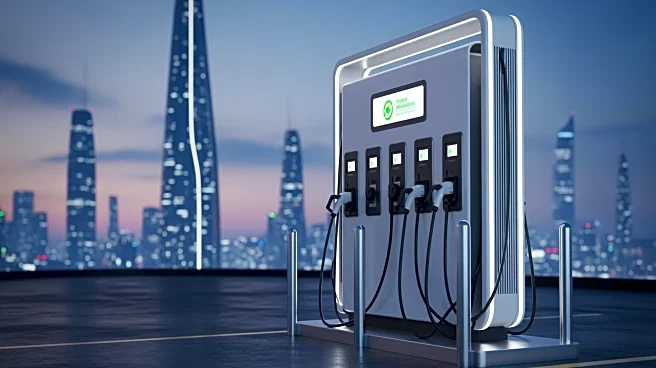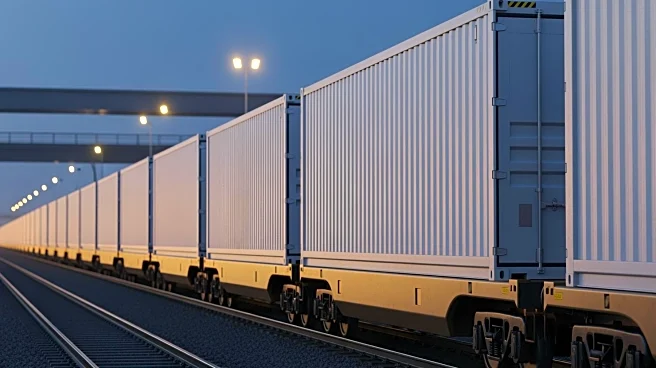What's Happening?
Amazon has launched the UK's largest fleet of electric heavy goods vehicles (eHGVs), marking a significant step in its efforts to decarbonize its transportation network. The fleet, consisting of 160 eHGVs,
is the largest in Amazon's global operations. These 40-tonne electric trucks, manufactured by Mercedes-Benz, can travel over 300 miles on a full charge while carrying a load of 22 tonnes. In addition to the eHGVs, Amazon plans to introduce 800 new electric vans to its UK fleet and expand pedestrian deliveries in the London Borough of Camden. This initiative is part of Amazon's broader strategy to reduce carbon emissions and traffic congestion. However, the company acknowledges challenges with the national electric vehicle charging infrastructure, despite having installed fast charging technology at its UK sites.
Why It's Important?
The introduction of Amazon's eHGV fleet represents a significant advancement in the logistics and transportation industry, particularly in the context of environmental sustainability. By transitioning to electric vehicles, Amazon aims to reduce its carbon footprint, aligning with global efforts to combat climate change. This move could set a precedent for other companies, encouraging wider adoption of electric vehicles in commercial fleets. The initiative also highlights the growing importance of sustainable practices in business operations, potentially influencing public policy and industry standards. However, the success of such initiatives depends on the development of robust charging infrastructure, which requires collaboration between industry stakeholders and government bodies.
What's Next?
Amazon's expansion of its electric fleet is likely to prompt further discussions on the development of electric vehicle infrastructure in the UK. The company has called for continued collaboration with industry and government to enhance the national charging network, which is crucial for the widespread adoption of electric vehicles. As Amazon continues to invest in its own facilities, other logistics companies may follow suit, potentially accelerating the transition to electric transportation. Additionally, the success of Amazon's initiative could influence regulatory frameworks and incentivize further investments in sustainable transportation solutions.
Beyond the Headlines
The rollout of Amazon's eHGV fleet could have broader implications for the logistics industry, including shifts in supply chain management and operational strategies. The move towards electric vehicles may necessitate changes in logistics planning, such as optimizing routes for charging availability and integrating new technologies for fleet management. Furthermore, the initiative underscores the ethical responsibility of corporations to address environmental concerns, potentially reshaping consumer expectations and corporate accountability standards. As companies increasingly prioritize sustainability, this could lead to long-term shifts in industry practices and consumer behavior.












